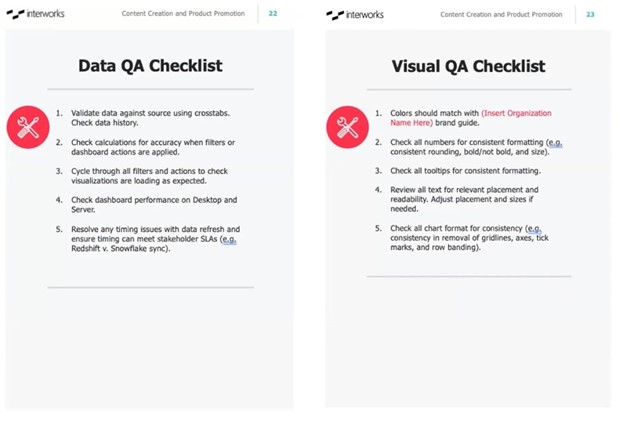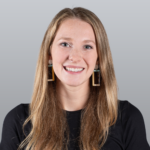You’ve arrived at the final blog in our series of three on unique governance solutions in Tableau. So far, we’ve seen two ways that the core Governance Principles can be molded to support different priorities when it comes to governing your Tableau site. It’s safe to say that governance is not “one size fits all,” and we’ve had the privilege of helping clients identify what governance looks like for them. In this last post, we’ll focus on one more aspect of governance that’s important for all organizations.

Situation: Organization faced turnover and ambiguous processes
Context: Retail company with approximately one dozen Creators and 400 Viewers
Our Recommendation: Process Adherence and Documentation
Guiding Principles:

Our final solution may resonate with those who’ve ever stepped into a new role with little instruction and been expected to simply figure it out. This client once had a strong sense of structure on their Tableau site but saw their governance strategy slipping in the wake of organizational change and transfer of Tableau responsibilities. Imagine a pizza parlor that doesn’t train employees on any standard of pepperoni pizza-making. Some will place the pepperoni on top of the cheese, and some will tuck it under! Although both methods work, they lack consistency and could create confusion. This silly example is analogous to what happens on a much grander scale in the absence of processes and documentation, even in an organization that has expertly integrated all the governance principles.

Imagining the impact of organizational change in an environment that lacks these foundations reveals just how broad governance is. Challenges that arise might include:
- Inconsistencies in database field naming, understood only by the architect who structured the data
- Variations of calculation logic spread across workbooks, making a single source of truth impossible to find
- Subjectivity in the content publishing procedure due to lack of documented standards, resulting in unvetted content landing in production locations
- Conflicting permissions across content, rendering users unable to connect to data or see expected workbooks
- New Tableau Creators onboarding without a sense of where they should publish their workbooks and what data sources have been vetted for production use
… the list goes on!
Yet, how many of these things could be streamlined by creating strong documentation to remove the guesswork from governance as organizations meet change?
When faced with this dilemma, we lean heavily on Principle 2, which sees content in DEV to PROD following a clearly defined approval process. One of the best ways to ensure that content is assessed for production-readiness the same way each time is to establish checklists for Data and Visuals that must be completed for content to be moved. Below are sample checklists we recommend building off of as you consider what should be considered in your organization’s DEV to PROD procedures.

These checklists will become a core part of the documentation that creates consistency on your server that will stand the test of time and turnover, and they will also aid in quickly onboarding new Tableau users to your environment.
As you solidify the governance solution that works for you, take care to document other areas outlined here:

Ultimately, what and how you choose to document will reflect your unique organization. Having a centralized space with resources to answer questions about your Tableau environment will ensure more seamless onboarding for new Tableau users, and it will help your organization adhere to processes that maintain consistency for years to come.
What’s Next?
We admit that governance is a big topic to tackle, and finding the right formula for your organization can feel daunting. If you’re wondering where to start, we recommend identifying one of the three solutions presented in this series that most closely aligns with your current position on governance. Make note of the “Guiding Principles” listed next to the solution, and dig deeper by watching the informative Tableau Governance 101 webinar created by InterWorks’ own Debbie Yu.
Blogs in review:
- Flexibility through Principles 1,3 and 4
- Delegation through Principles 1,4 and 5
- Documentation through Principles 2,3 and 5
Interested in partnering with InterWorks for a governance deep-dive? We would love to chat with you, and have designed a solution specifically for this purpose. Governance 360 by InterWorks offers a qualitative assessment of your Tableau environment, during which an experienced consultant will propose actionable recommendations to better your governance processes and improve self-service in your Tableau environment. Interested? Give us a shout today!
Many thanks to my knowledgeable InterWorks colleagues, Peter Gurr, Sarah Dorfman and Justus Niemzok for sharing their experiences in customizing strategic governance solutions for our clients.


